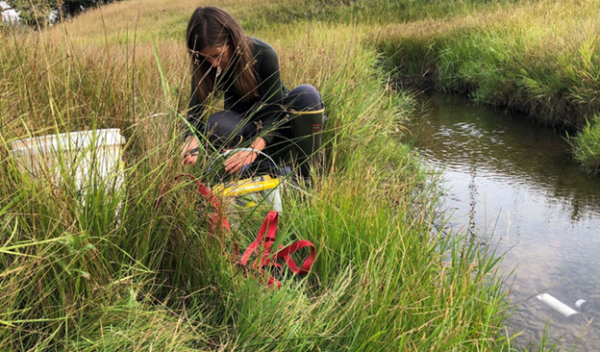New research by Joanna Blaszczak of the University of Nevada, Reno and her colleagues shows that hypoxia in rivers and streams is more prevalent across the globe than previously thought. Hypoxia occurs when oxygen levels in surface waters become depleted, which can be harmful to aquatic species and can increase production of greenhouse gases from rivers.
The U.S. National Science Foundation-supported study, published in the journal Limnology and Oceanography Letters, compiles more than 118 million readings of dissolved oxygen and temperature taken from more than 125,000 locations in rivers across six continents and 93 countries. The study spans more than 100 years, from 1900 to 2018.
Hypoxia, defined in this study as dissolved oxygen concentrations below 2 milligrams per liter, was detected in rivers and streams in 53 countries, with 12.6% of all locations exhibiting at least one hypoxic measurement.
“Hypoxia in coastal waters and lakes is widely recognized as a detrimental environmental issue, yet we have lacked a comparable understanding of hypoxia in rivers,” Blaszczak said. “While 12.6% might not seem like a huge percentage, it was thought that occurrences of hypoxia in rivers and streams were exceedingly rare. Having shown hypoxia in one of every eight river locations is a game-changer in terms of how we need to think of and give attention to the issue of hypoxia in rivers and streams.”
Blaszczak says that advances in measuring hypoxia over the past 15 years using field-deployable dissolved oxygen sensor technology that allows for constant monitoring has given researchers the tools to get a better handle on hypoxia. Previously, readings were taken manually using a handheld probe or by collecting water samples mostly during the day, when oxygen levels are naturally higher due to photosynthesis during daylight hours.
“Photosynthesis by algae produces oxygen that is released into the water column,” Blaszczak says. “You’re not getting a true picture of hypoxia occurrence if you only measure during the day. Hypoxic conditions are much more likely to develop in the early morning hours, after the lack of photosynthesis all night. Newer technology allows for us to capture that data.”
The research showed a dramatic difference in results between older methods and newer technology. “We find that if we only sampled during the day every day, between 8 a.m. and 5 p.m., it would under-detect the number of river locations with hypoxia by about 25%,” Blaszczak said.
Added Jason West, a program director in NSF’s Division of Environmental Biology, “These researchers have given us a much clearer picture of the occurrence of stream hypoxia around the globe, a huge effort that provides important context for how these ecosystems function and how they may respond to human activities in the future.”
Source: News Release

